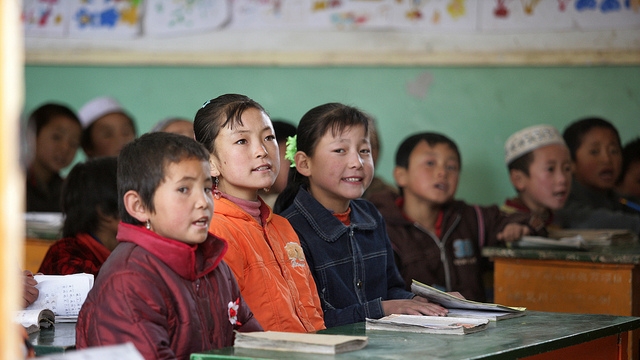Guangdong, China, May 31, 2011 – Bustling construction sites, hectic traffic, splendid amusement parks, endless nighttime entertainment – if any place symbolizes the booming Guangdong Province and the success of China’s economic reform, it is Shenzhen. This modern metropolis of 14 million people was a sleepy fishing village just 30 years ago.
But there is more to Guangdong province than Shenzhen. At only a 2-3 hours drive away from the prosperous Pearl River Delta, in the east, west and particularly in the mountainous north of the province, poverty is deep, jobs are limited, and social services are meager.
Guangdong’ economy is roughly the size of Turkey’s, its per capita GDP roughly the level of OECD countries’, but more than 18 percent of its rural residents live on under $2 per day. The province is a microcosm of China today – rising inequality has become one of the most prominent development issues facing the country as well as other parts of the developing world.
To help make growth more inclusive, the World Bank tried to help the government look at the challenges of inequality from a broader perspective, and outlined the roles and priorities of the government in a recently published study. The Bank has also supported projects that promote equal opportunities in education, health care, employment, and old-age protection for all.
Addressing a Pressing Issue
Zeng Chunquan, 22, is from Heyuan of northern Guangdong, where GDP is only a fraction of Shenzhen’s. He dropped out of junior high school six years ago: his family of seven, who all live on his father’s monthly fishing income of less than 800 RMB ($120), could no longer afford the tuition fees. He came to Shenzhen the same year. Today he earns around 2,000 RMB ($300) per month working in a bubble tea shop. Although he earns much less than the average salary of white collar workers in Shenzhen, he sends half of his paycheck back home to help pay for his sister’s education and his parent’s health care.
Zeng’s story illustrates “inequality,” which the Bank’s study defines on three levels as “absolute poverty,” “inequality of opportunity,” and “inequality in outcome” reflected in income and wealth.
To address these challenges the Bank recommends the following actions:
- Eliminate absolute poverty through direct social assistance that is targeted at the extreme poor.
- Reduce inequality of opportunities by promoting more equal access to education, health services, and skills development.
- Contain inequality of outcomes by enhancing earning opportunities, especially for rural population.
While the government has made remarkable progress in this direction, the report suggests more could be done by setting clearer priorities and through greater efficiency. The report also points out that disparities in income and production linked to geography are inevitable.
Ongoing Actions to Reduce Inequality
Reducing poverty and promoting a more equitable society has always been a priority in the World Bank’s support to China. The World Bank program to support education, health and social protection helped narrow the gaps within urban areas, between rural and urban areas, between developed and less-developed regions.
Projects include:
- A rural health project that aims to provide increased and more equitable access to quality health services, improved financial protection, and better management of public health threats in rural China.
- A skill development and employment project that is supporting the training and transition of rural workers to urban areas to access better employment opportunities that improve their incomes and working conditions.
- A social insurance integration project that is under preparation and will support experiments to develop more integrated urban and rural old age and health insurance programs.
”The Bank’s loans to China, especially since 2000, have been concentrating more and more on central and western areas, China’s least developed provinces,” says Chunlin Zhang, a Lead Private Sector Development Specialist at the Bank and co-leader of the report. For example, one education project has improved access to affordable, quality education for poor children in western China.
Sharing Experience
The widening gulf between the haves and have-nots is also a common growing pain for other developing countries. “The lessons (from the report) can be applied to many other provinces in China and indeed can be useful for other developing countries,” says Xiaoqing Yu, Lead Economist for Social Protection in the East Asia and Pacific Region at the World Bank, and who also co-led the report.
Zhang says the recommendations could be applied to other countries where inequality is a big challenge, including South Africa, where Zhang is currently based.
“The economic downturn caused by the global crisis in late 2008 may have forced a focus on short-term actions to stimulate the economy and maintain growth,” says Jim Adams, World Bank Vice President for East Asia and Pacific, in the report’s foreword. “However, it is important to recognize that longer-term issues, such as unbalanced growth, will determine the vitality of the economy and the cohesion of society.”

